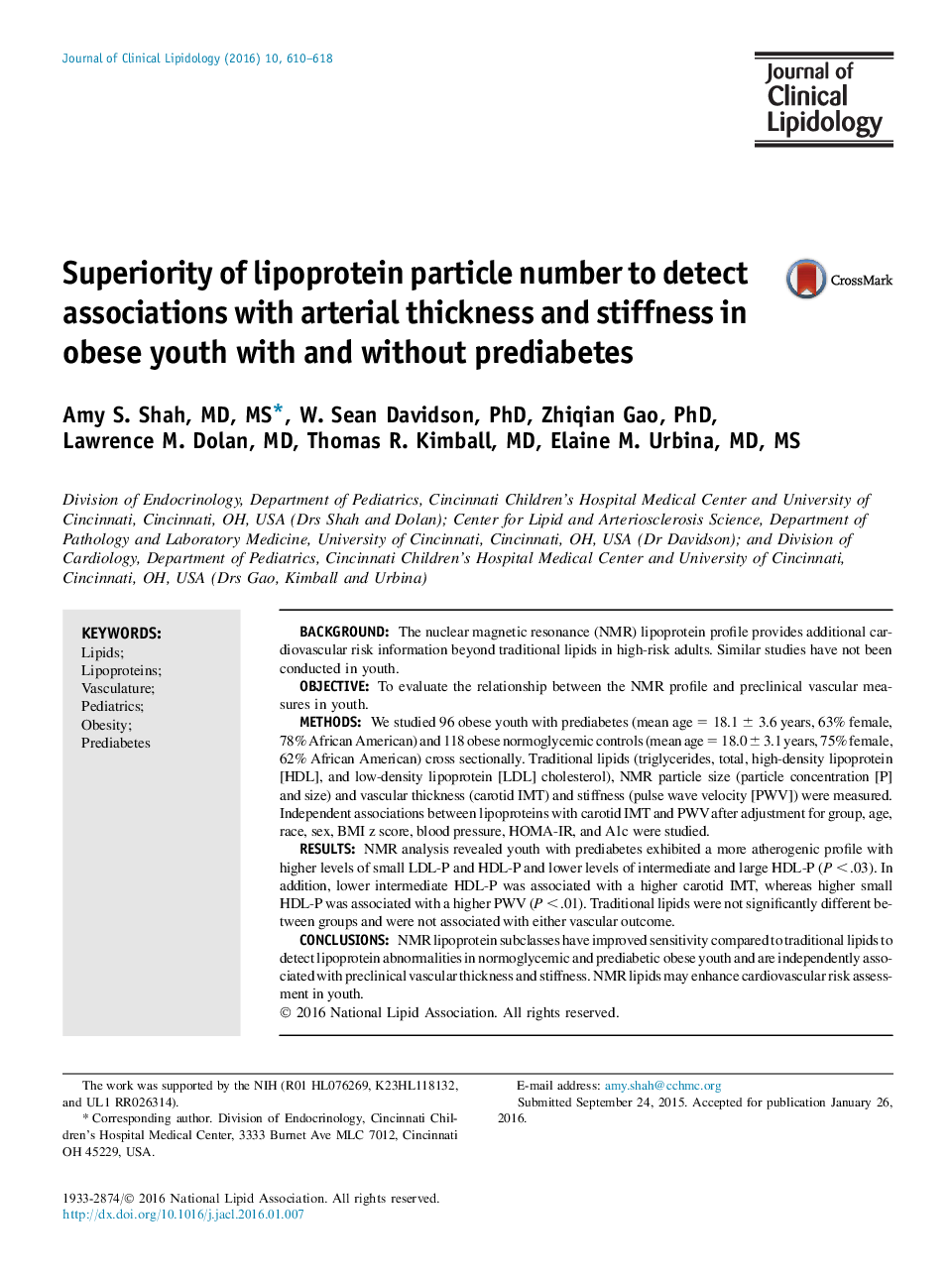| Article ID | Journal | Published Year | Pages | File Type |
|---|---|---|---|---|
| 5985321 | Journal of Clinical Lipidology | 2016 | 9 Pages |
â¢Traditional lipids are not different between normoglycemic and prediabetic youthâ¢NMR analysis shows prediabetic youth have a more atherogenic lipid profileâ¢NMR lipoproteins are associated higher carotid IMT and pulse wave velocityâ¢NMR lipoproteins have improved sensitivity compared to traditional lipids
BackgroundThe nuclear magnetic resonance (NMR) lipoprotein profile provides additional cardiovascular risk information beyond traditional lipids in high-risk adults. Similar studies have not been conducted in youth.ObjectiveTo evaluate the relationship between the NMR profile and preclinical vascular measures in youth.MethodsWe studied 96 obese youth with prediabetes (mean age = 18.1 ± 3.6 years, 63% female, 78% African American) and 118 obese normoglycemic controls (mean age = 18.0 ± 3.1 years, 75% female, 62% African American) cross sectionally. Traditional lipids (triglycerides, total, high-density lipoprotein [HDL], and low-density lipoprotein [LDL] cholesterol), NMR particle size (particle concentration [P] and size) and vascular thickness (carotid IMT) and stiffness (pulse wave velocity [PWV]) were measured. Independent associations between lipoproteins with carotid IMT and PWV after adjustment for group, age, race, sex, BMI z score, blood pressure, HOMA-IR, and A1c were studied.ResultsNMR analysis revealed youth with prediabetes exhibited a more atherogenic profile with higher levels of small LDL-P and HDL-P and lower levels of intermediate and large HDL-P (P < .03). In addition, lower intermediate HDL-P was associated with a higher carotid IMT, whereas higher small HDL-P was associated with a higher PWV (P < .01). Traditional lipids were not significantly different between groups and were not associated with either vascular outcome.ConclusionsNMR lipoprotein subclasses have improved sensitivity compared to traditional lipids to detect lipoprotein abnormalities in normoglycemic and prediabetic obese youth and are independently associated with preclinical vascular thickness and stiffness. NMR lipids may enhance cardiovascular risk assessment in youth.
